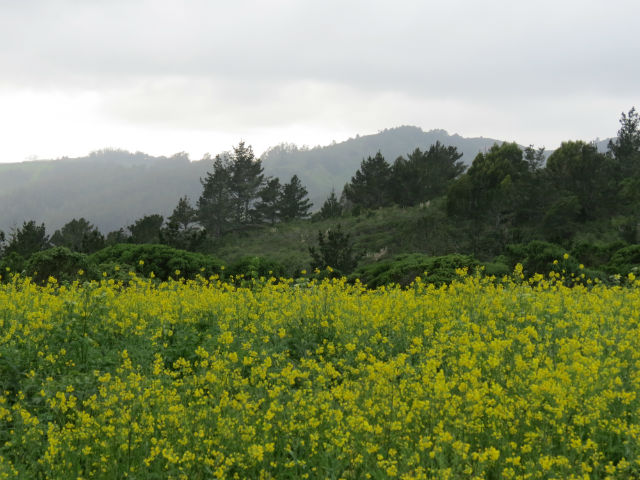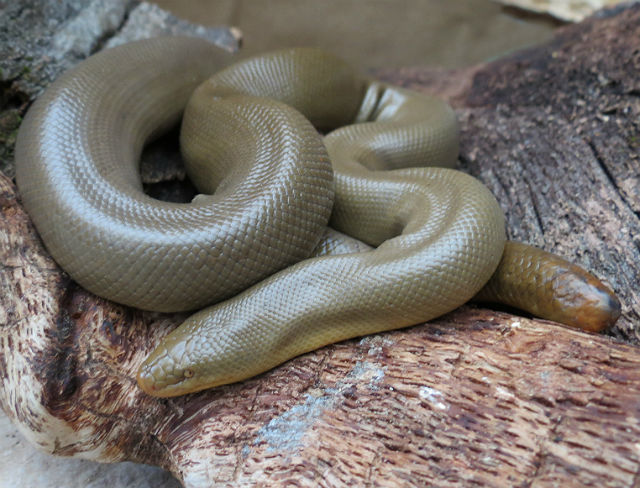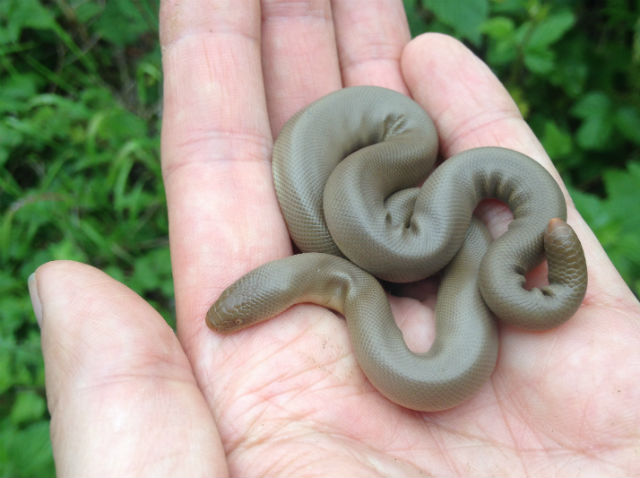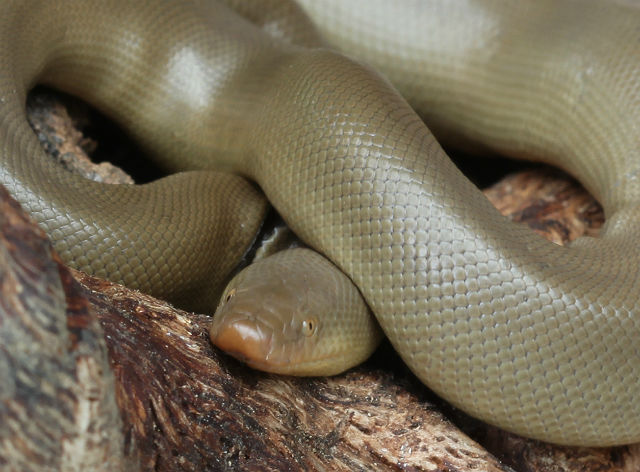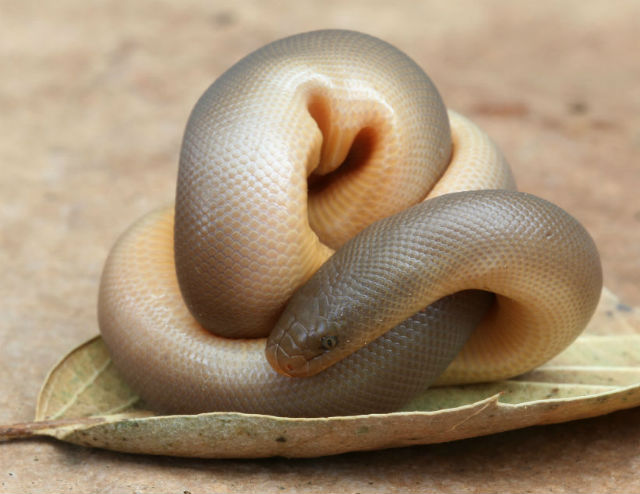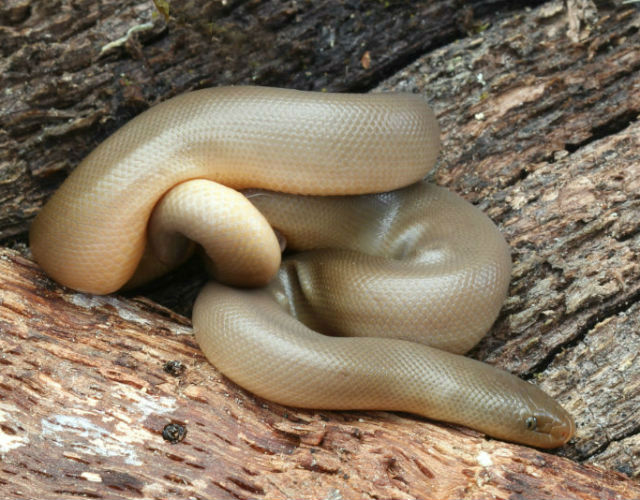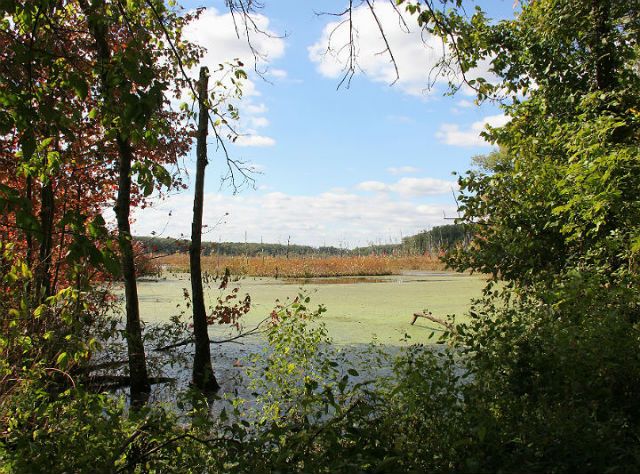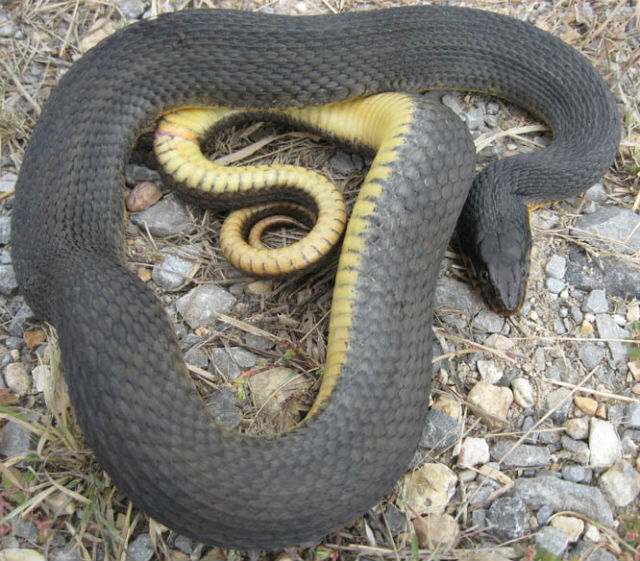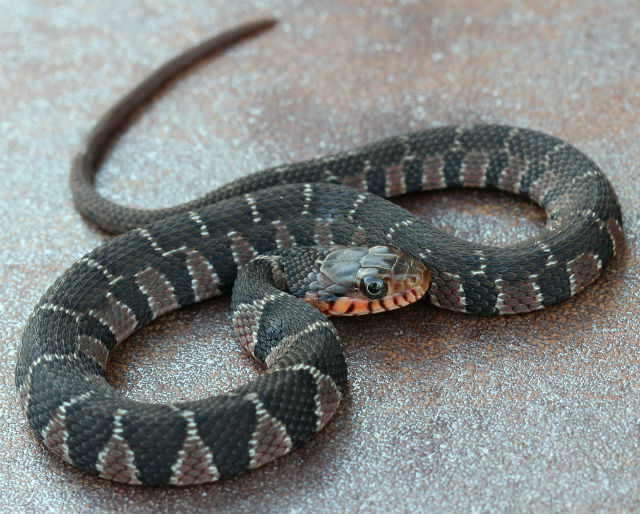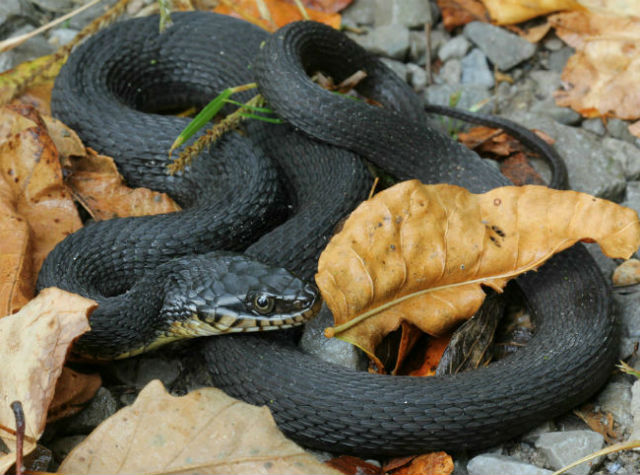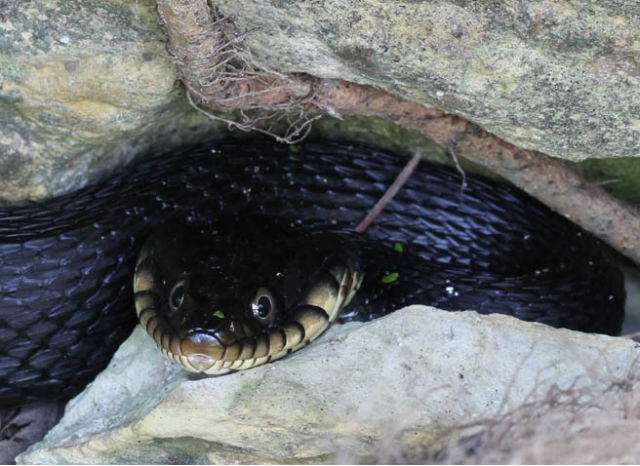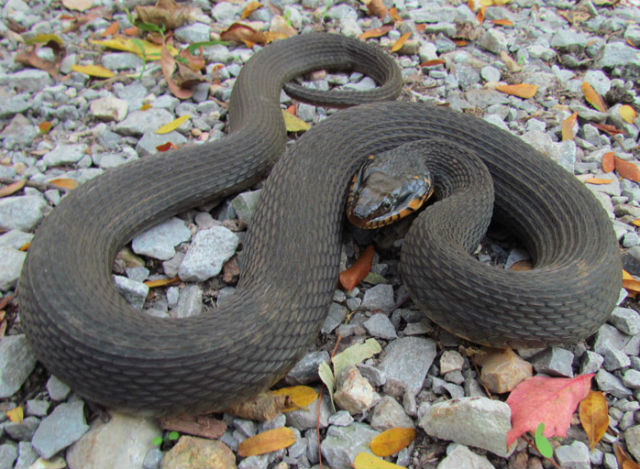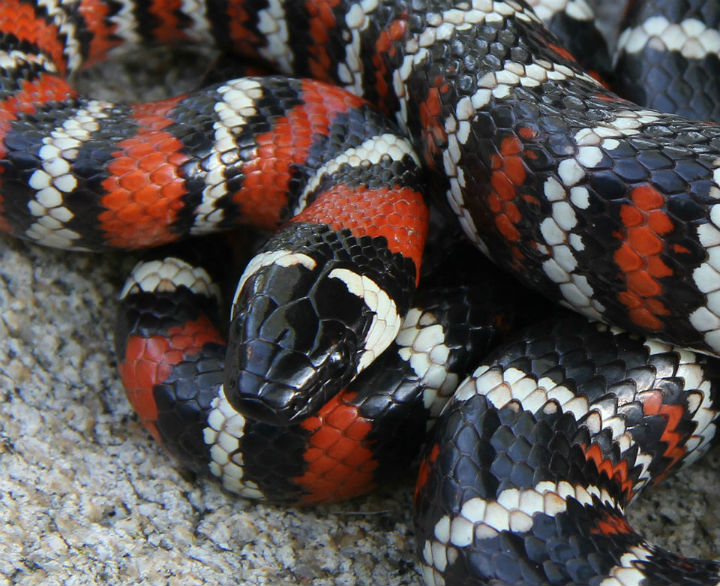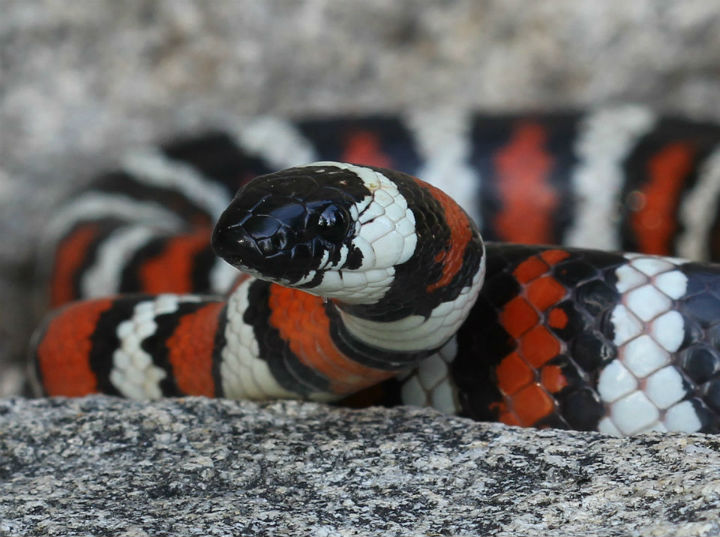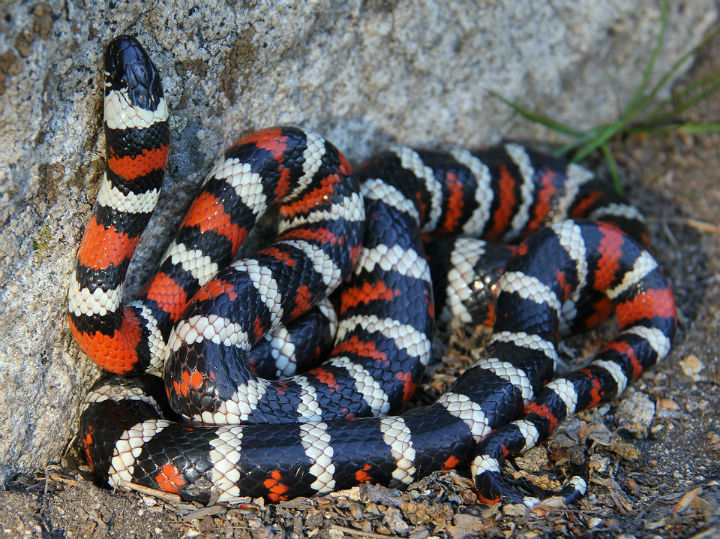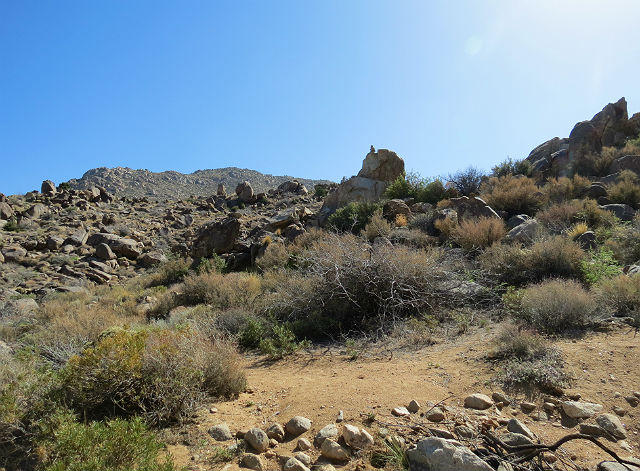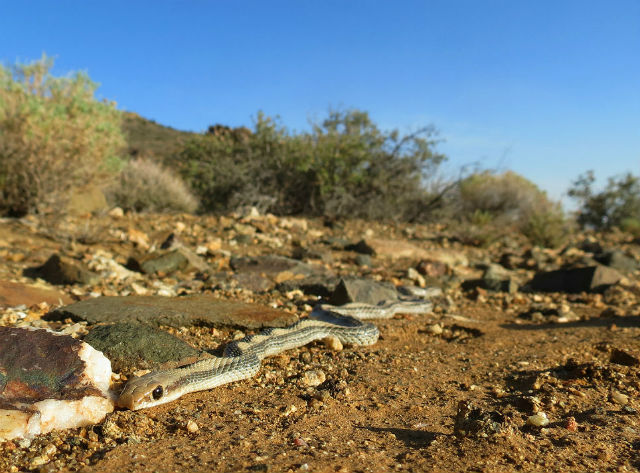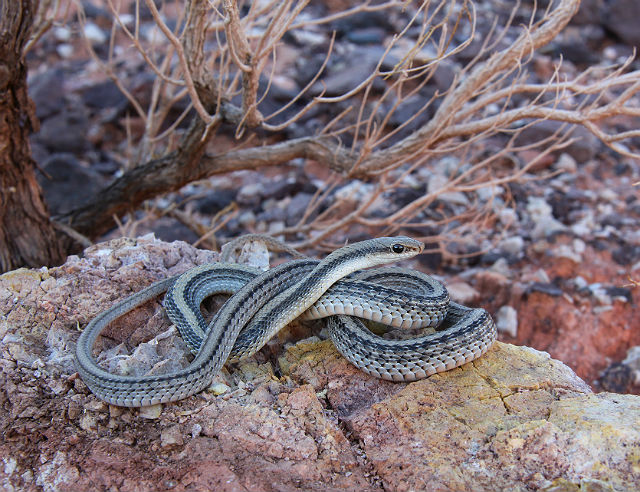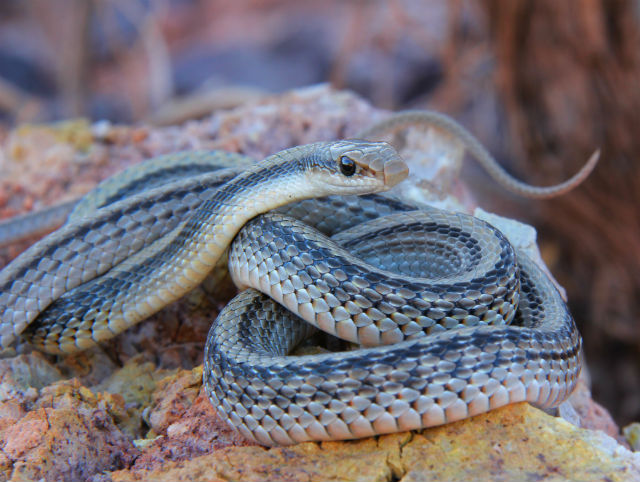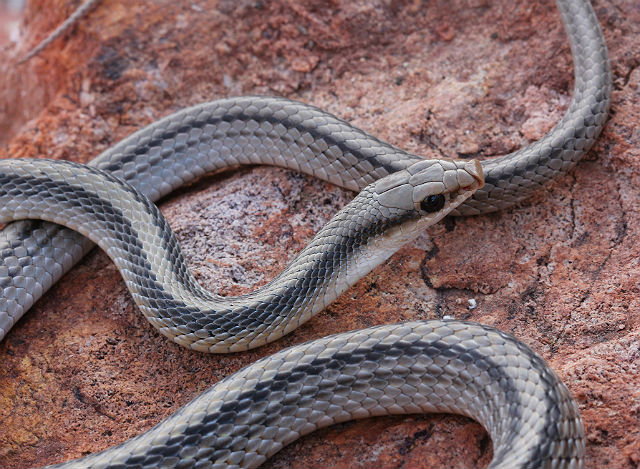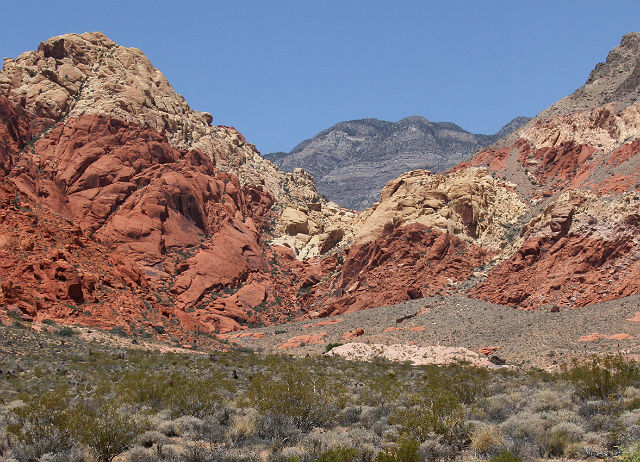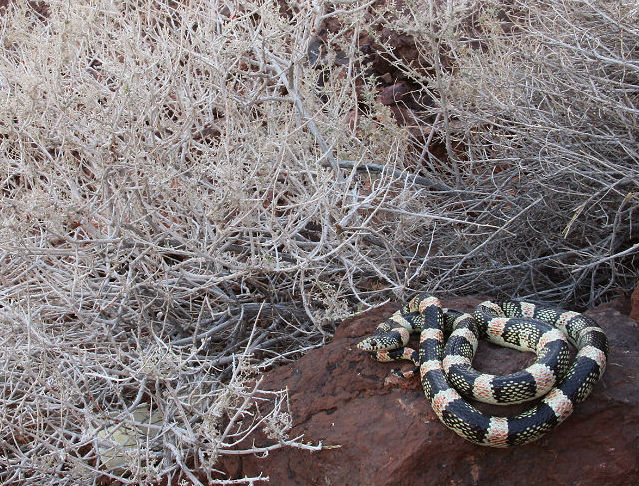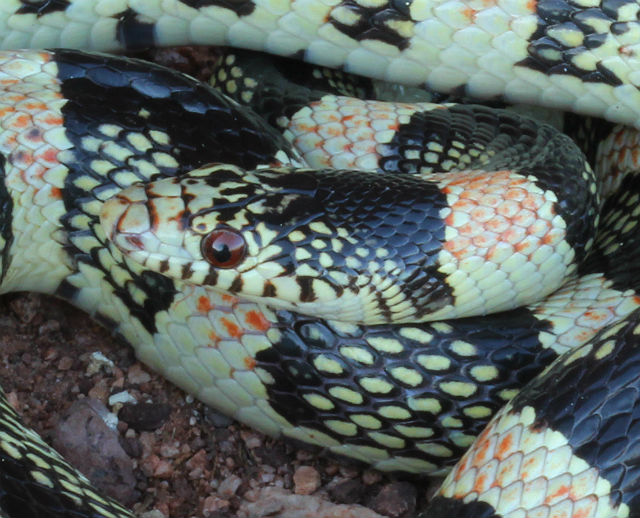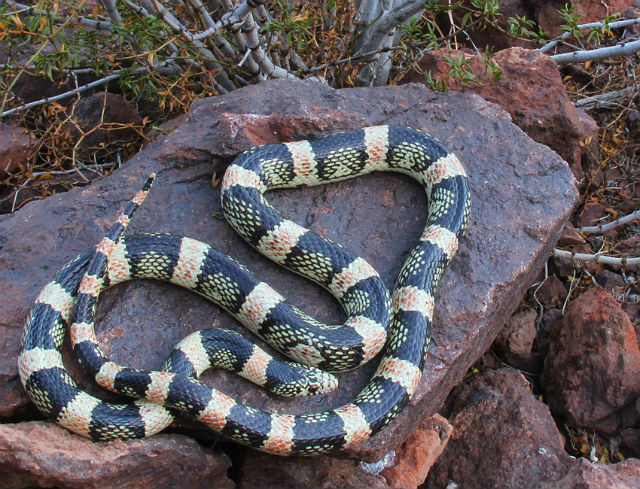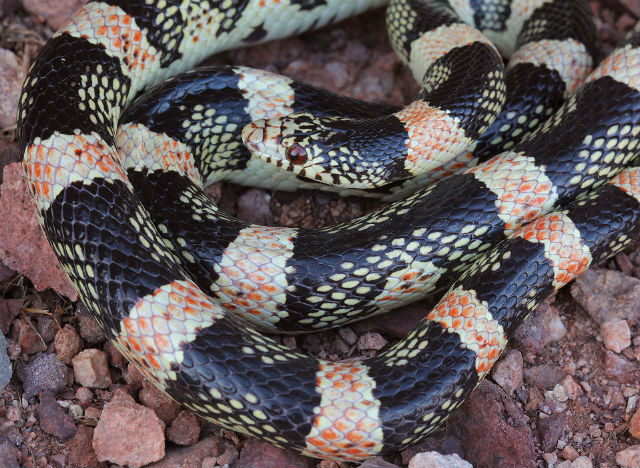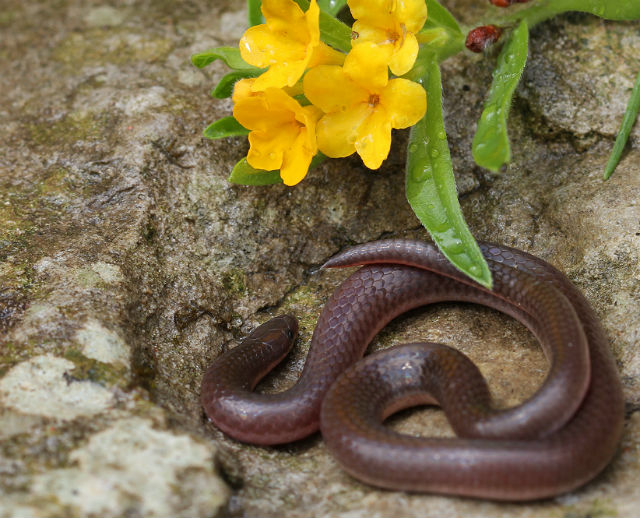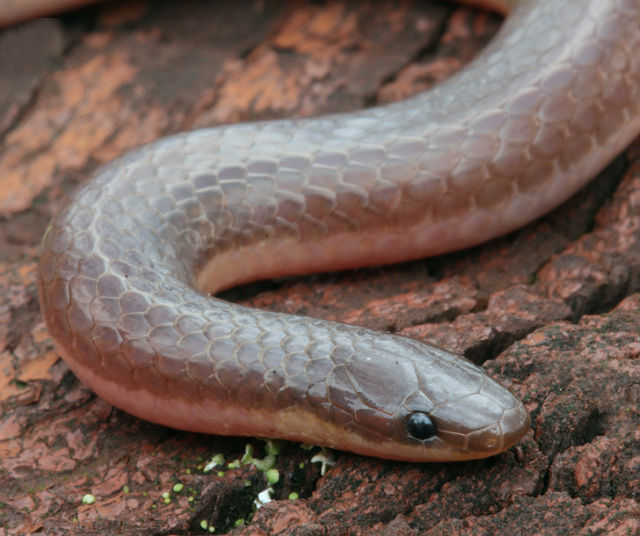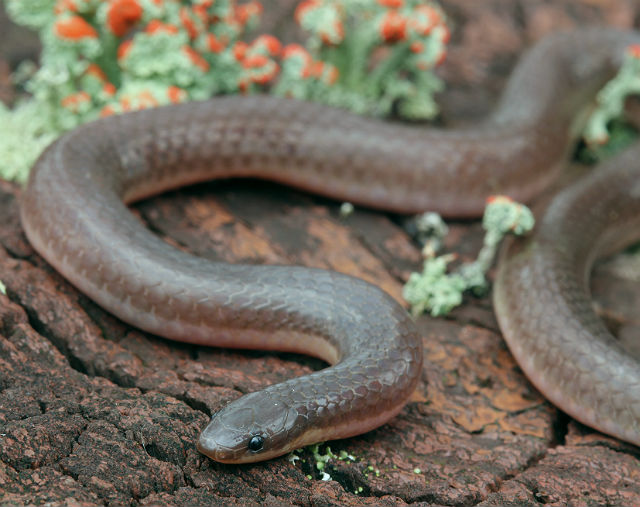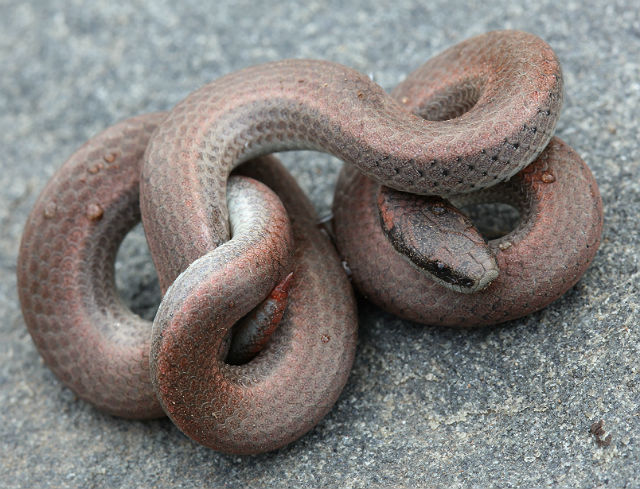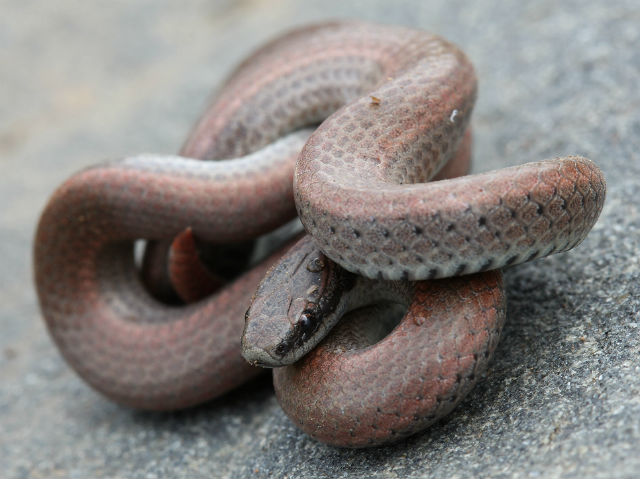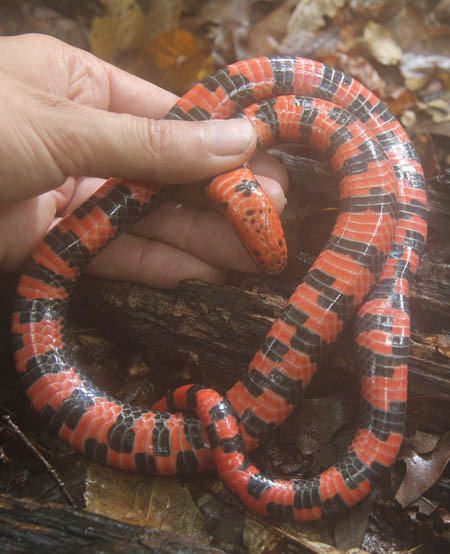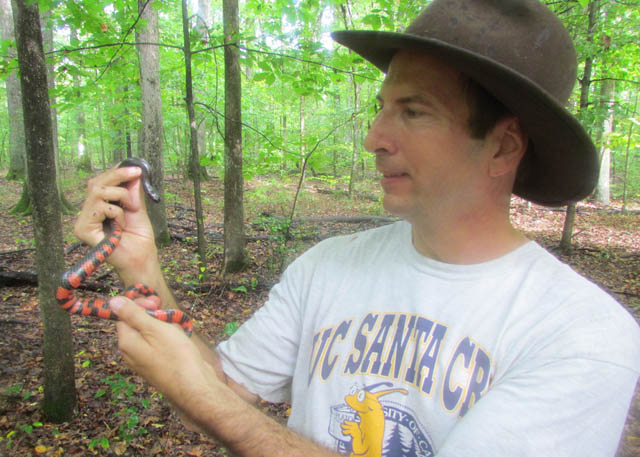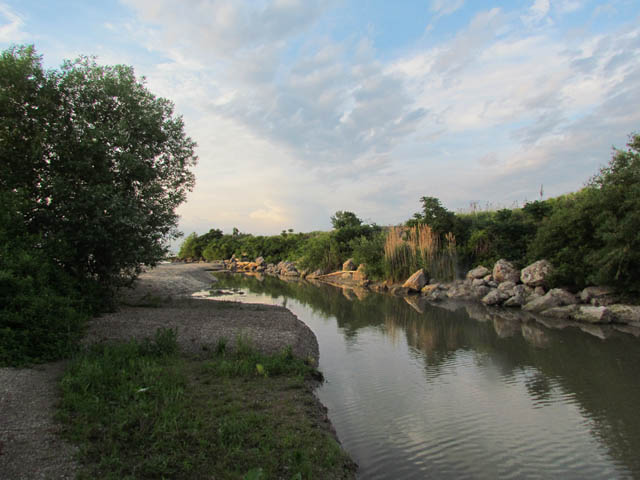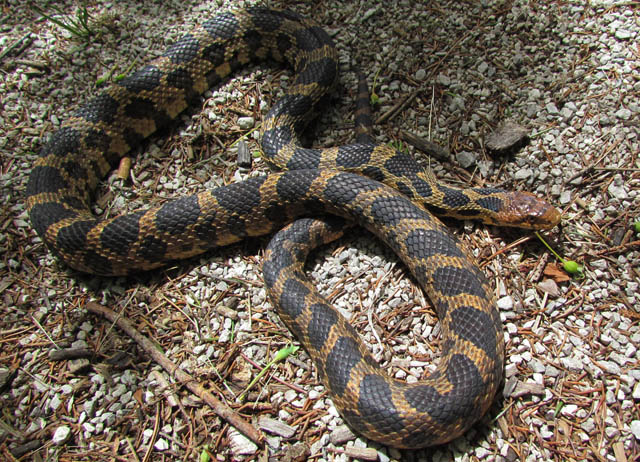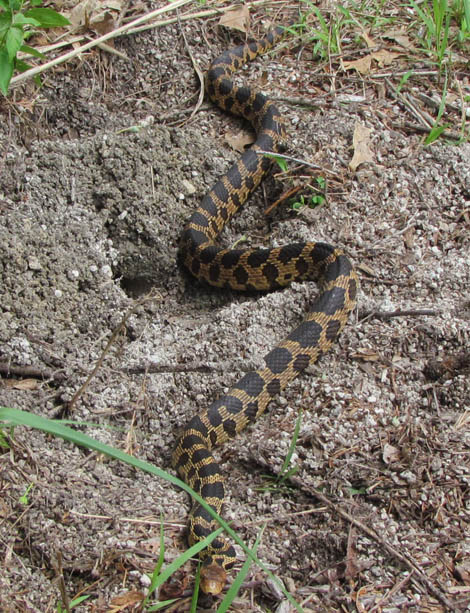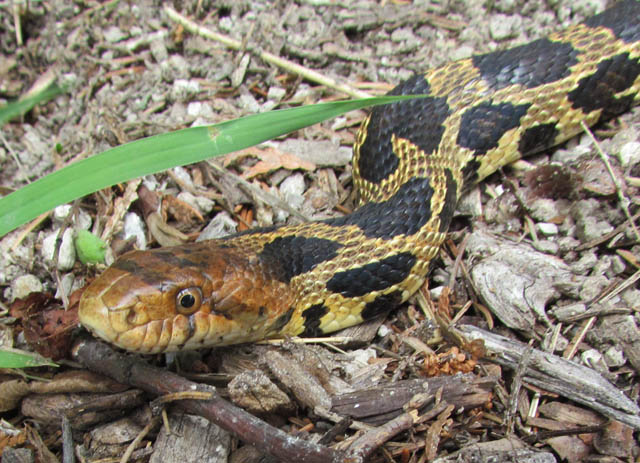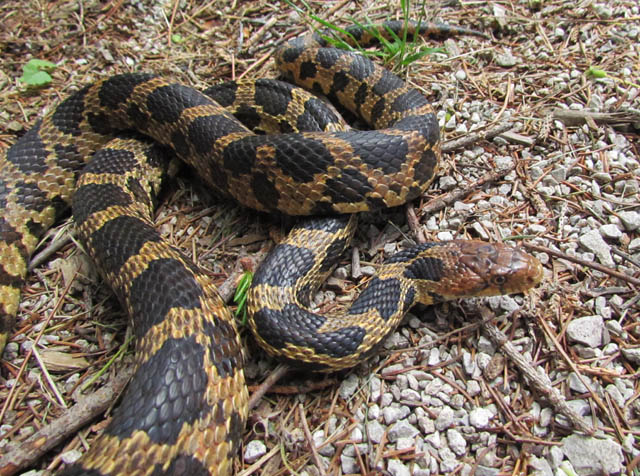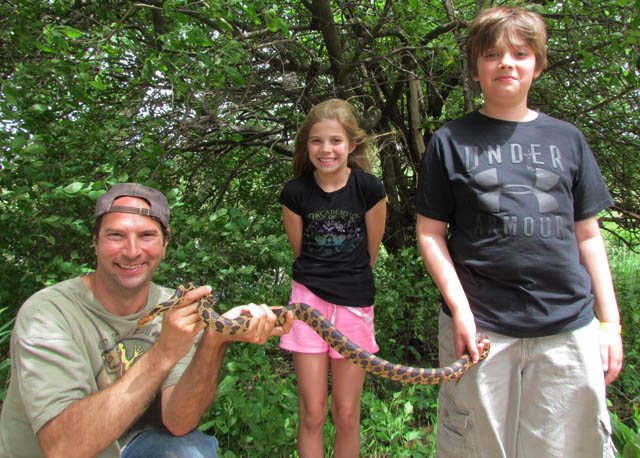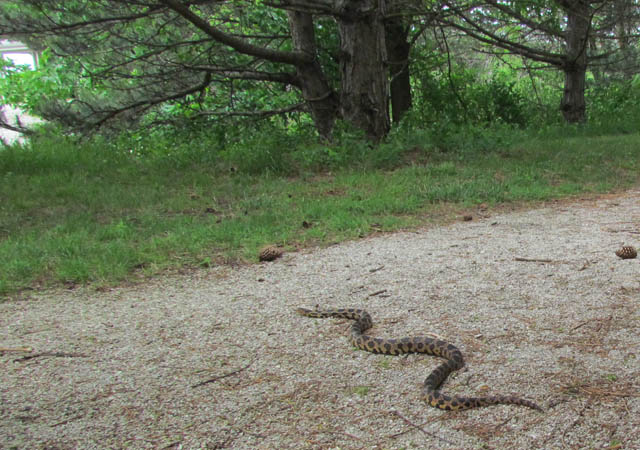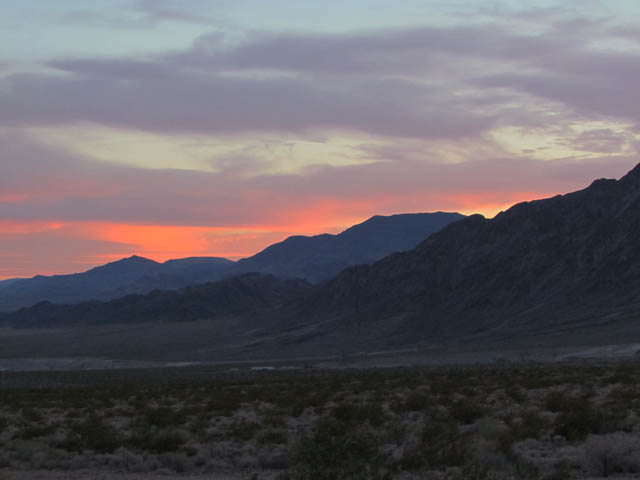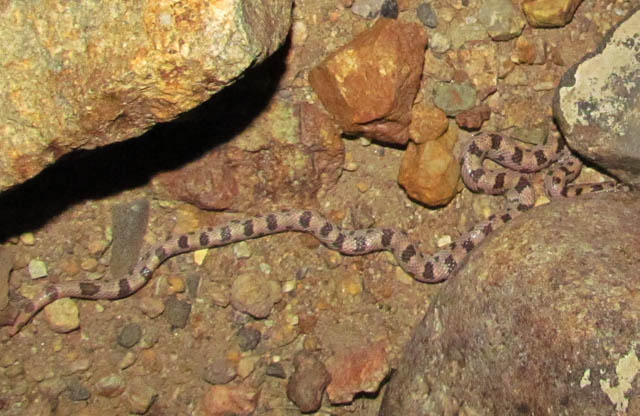When most people hear the word “boa” they think of a tropical serpent of gigantic proportions. But not only is the Rubber Boa the most northerly-occurring member of the boa and python family, it also is rather small, never getting to 3 feet in length.
Named for its lithe, pliable skin, this reptile, especially in older literature, is sometimes called the “Two-headed Snake,” since its blunt tail is about the same size and shape of its head.
The Rubber Boa is shy and rarely attempts to bite when caught. It is slow-moving and tends to curl up in a ball and hide its head when confronted with danger that it cannot escape from.
Unlike most snakes, the very secretive Rubber Boa likes relatively cool temperatures – 50-60 degrees. These snakes have a subterranean existence at least some of the time, they disappear in warm weather and seek cooler surroundings and moisture – often underground.
This snake was found on a mountain. Because they tend to live in relatively cold areas of the United States and sometimes at high elevations, these snakes may hibernate six months out of the year in some areas.
They are small, averaging 20-25 inches. Rubber Boas are unicolored and usually a drab shade of grey, brown or olive-green. It’s odd lifestyle and habits make this one of North America’s most unique serpents.

